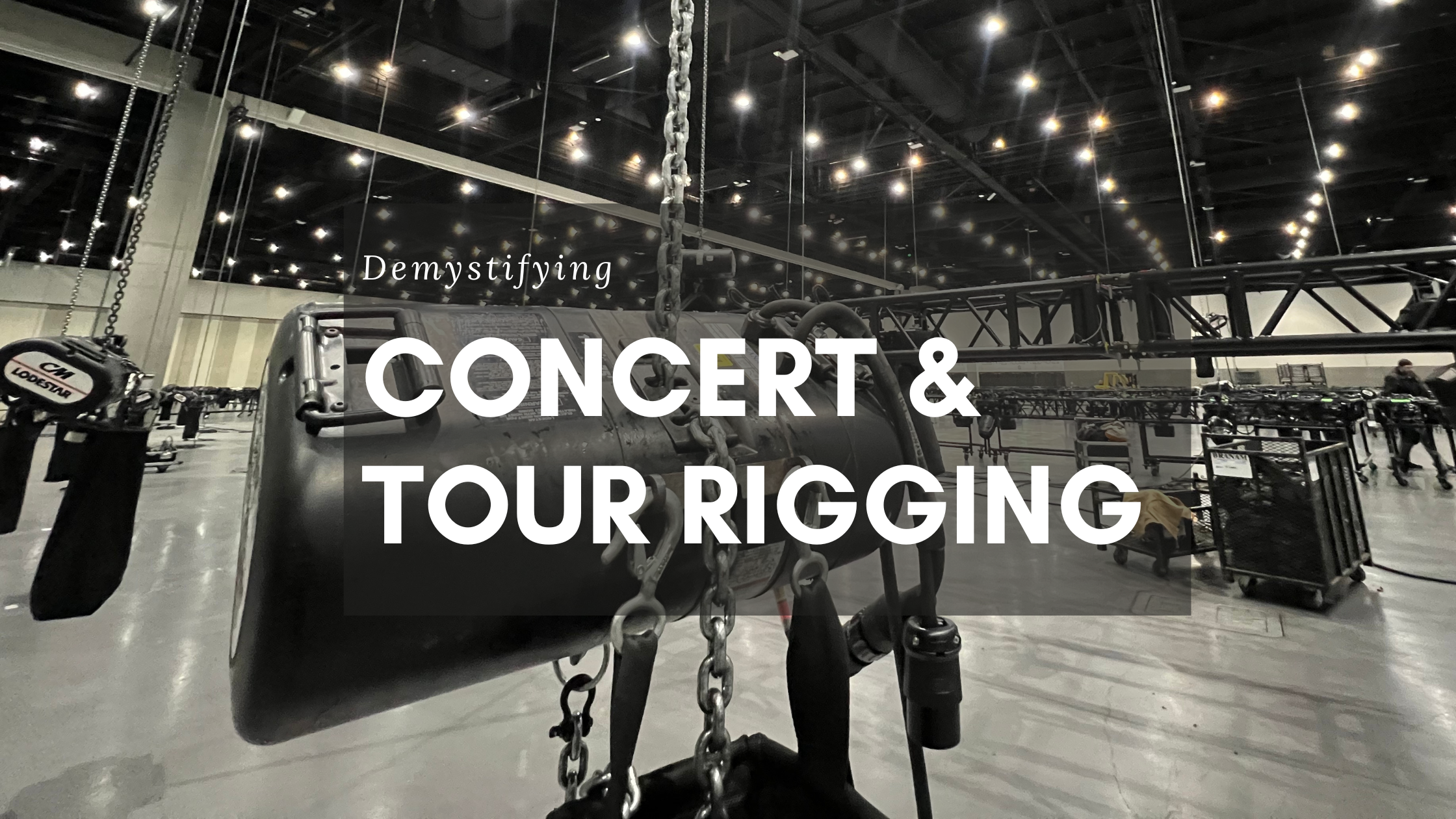Decoding Event Rigging in the Concert Industry
Introduction
Event rigging is a crucial aspect of the concert industry that often goes unnoticed by the audience. It refers to the intricate process of setting up various elements such as lighting, sound systems, special effects, and stage equipment to create a seamless and captivating live performance. Event rigging plays a significant role in ensuring the success of concerts, as it directly impacts the audience experience and the safety of performers and crew members.
Evolution of Event Rigging
Event rigging has a rich historical background that can be traced back to the early stages of live performances. In the past, the focus was primarily on manually lifting and positioning equipment, which was labor-intensive and time-consuming. However, with advancements in technology, the landscape of event rigging has dramatically transformed. The introduction of specialized automation systems, such as motorized hoists and winches, has revolutionized the efficiency and precision of rigging setups.
Key Players in Event Rigging
Within the realm of event rigging, skilled professionals known as event riggers are responsible for executing the complex rigging designs. Event riggers work closely with production teams and venue staff to ensure the smooth integration of rigging equipment and the overall setup. Effective communication and coordination are paramount in this collaborative process, as they ensure that the vision of the concert organizers and artists is translated into a well-executed rigging plan.
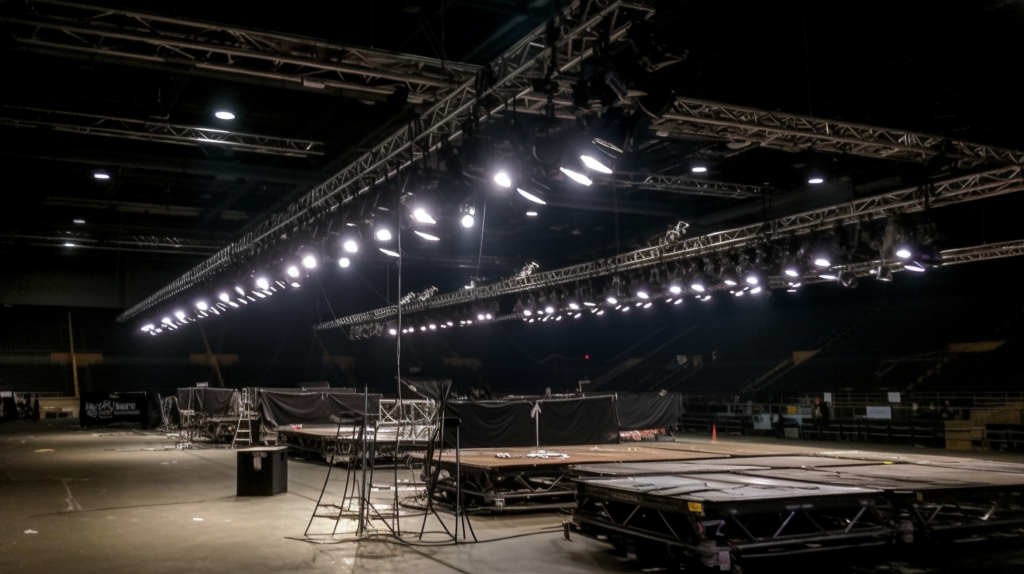
Safety Measures in Event Rigging
The safety of everyone involved in a concert is of utmost importance, and event rigging is no exception. Rigging safety standards and regulations have been established to mitigate risks and prevent accidents. Event riggers undergo extensive training and certifications to ensure that they possess the necessary skills and knowledge to execute rigging setups safely. Rigging professionals are also trained in conducting rigorous risk assessments, which involve identifying potential hazards and implementing effective mitigation strategies.
Event Rigging Equipment
Event rigging requires the use of various specialized tools and equipment to ensure the seamless execution of the setup. This includes hoists, chains, shackles, slings, trusses, and various hardware components. Different types of rigging systems, such as ground-supported truss structures and flying systems, are employed depending on the specific requirements of the concert setup. Regular inspection and maintenance procedures are essential to ensure the safety and functionality of the rigging equipment.
Rigging Techniques and Terminology
Event rigging encompasses a wide range of techniques used to assemble and suspend equipment. Common rigging techniques include dead-hanging, flying, and ground-supported rigging. These techniques require precision and expertise to ensure the stability and safety of the equipment. The event rigging industry also has its unique terminology, including terms such as bridles, span sets, and load cells. Familiarity with this terminology enables effective communication between event riggers and other professionals involved in the concert setup.
Rigging Design and Planning
Before executing a rigging setup, thorough planning is essential. Rigging design involves considering factors such as the weight and dimensions of equipment, venue specifications, and load capacity. Collaboration between riggers, engineers, and designers is crucial during the planning phase to ensure the feasibility and safety of the rigging design. Rigging design software plays a vital role in visualizing and optimizing the design, streamlining the planning process, and ensuring accurate execution.
Rigging Process in Concert Setup
The rigging process in a concert setup follows a specific timeline and sequence of activities. Load-in and load-out are the primary stages during which rigging responsibilities are carried out. Load-in involves the transportation, installation, and assembly of rigging equipment, while load-out focuses on dismantling and removal. The rigging team faces various challenges during these stages, such as time constraints, limited access, and adapting to unforeseen circumstances. Effective problem-solving and improvisation skills are required to overcome these challenges in real-time.
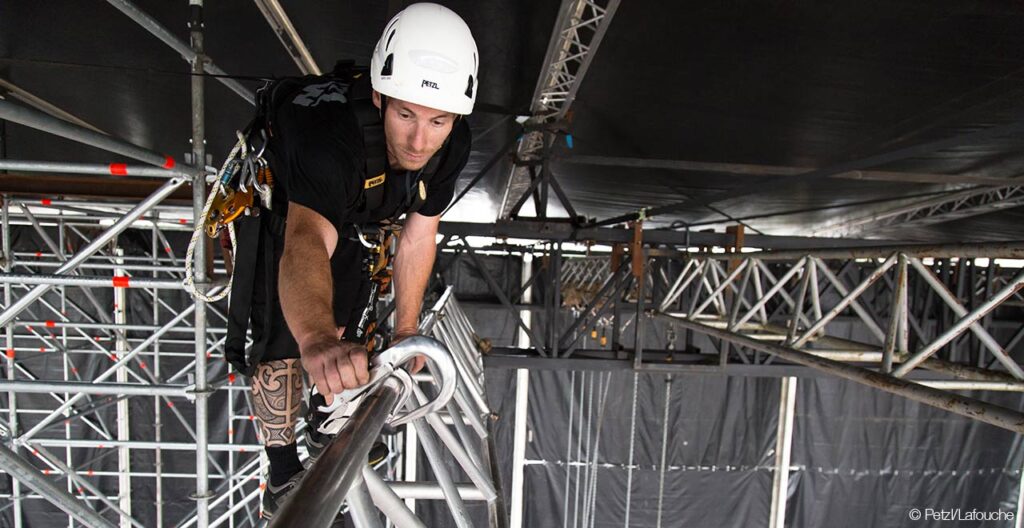
Rigging Guidelines for Different Concert Venues
The rigging requirements and challenges differ depending on the type of concert venue. Indoor venues pose unique challenges, such as limited ceiling height and structural limitations. Rigging techniques must be adapted accordingly to ensure the safety and feasibility of the setup. Outdoor venues bring their own set of challenges, including adverse weather conditions and the need for weatherproof equipment. Rigging considerations for unique venues, such as stadiums and arenas, require careful planning and expertise to accommodate large-scale structures and heavy equipment.
Rigging for Special Effects and Aerial Performances
Event rigging plays a critical role in incorporating special effects and facilitating aerial performances. Rigging design must account for the integration of pyrotechnics, LED screens, and other visually stunning effects that enhance the concert experience. Safety is paramount during aerial performances, as performers are often suspended in the air. Close coordination between event riggers, performers, and stage crew members ensures the successful execution of these complex and visually captivating elements.
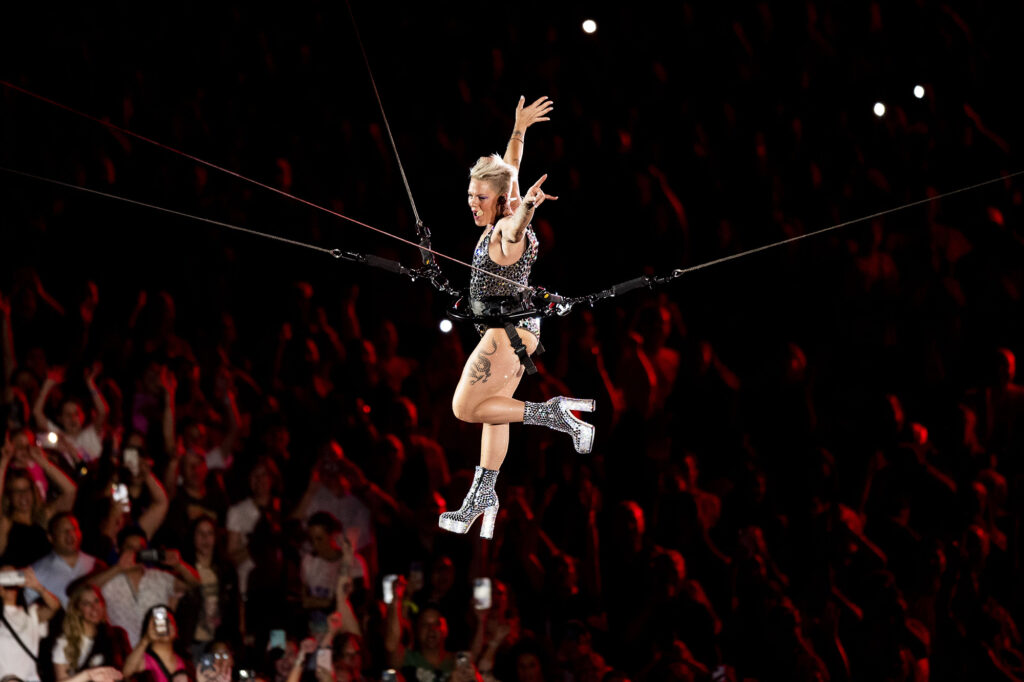
Event Rigging and Sustainability
In recent years, the concert industry has been increasingly conscious of its environmental impact. Event rigging can contribute to sustainability efforts by adopting eco-friendly practices such as minimizing waste, using energy-efficient equipment, and reducing carbon emissions. Responsible rigging practices, such as proper disposal of rigging materials and recycling, can help mitigate the environmental footprint of concerts. By prioritizing sustainability, event riggers contribute to creating a greener and more environmentally conscious industry.
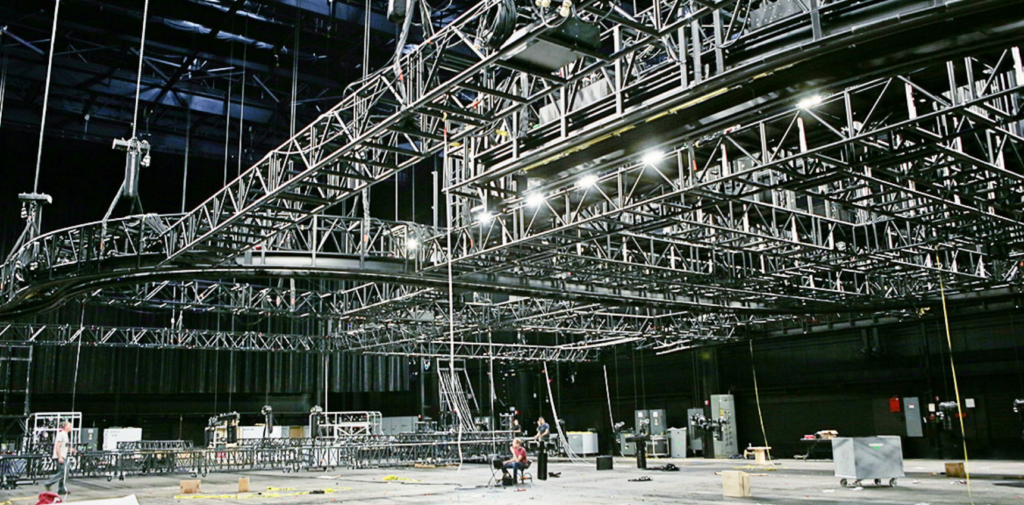
Event Rigging at Music Festivals
Music festivals present a unique challenge for event rigging due to their multi-stage setups and fast-paced schedules. Rigging logistics play a crucial role in ensuring the smooth operation of multiple stages simultaneously. The coordination between rigging teams, synchronized load-ins and load-outs, and efficient use of resources are key factors in successfully executing rigging setups at music festivals. Safety and efficiency are of paramount importance in these high-pressure environments.
Rigging Failures and Lessons Learned
Regrettably, rigging failures and accidents have occurred in the industry, highlighting the importance of continuous improvement and learning from past mistakes. Studying notable rigging failures through case studies helps identify potential risks and develop best practices. Key takeaways from these incidents inform changes in industry standards, rigging equipment, and training programs. Additionally, the psychological impact on event riggers involved in such accidents underscores the need for mental health support and stress management resources.
Rigging Safety and Legal Considerations
Event riggers bear significant legal responsibilities and potential liabilities. They must adhere to relevant safety regulations and industry standards to ensure the welfare of performers, crew members, and audience members. Rigging companies are typically required to have proper insurance coverage to protect against accidents or damages. Compliance with local regulations and safety standards is essential to maintain a safe working environment and prevent legal complications.
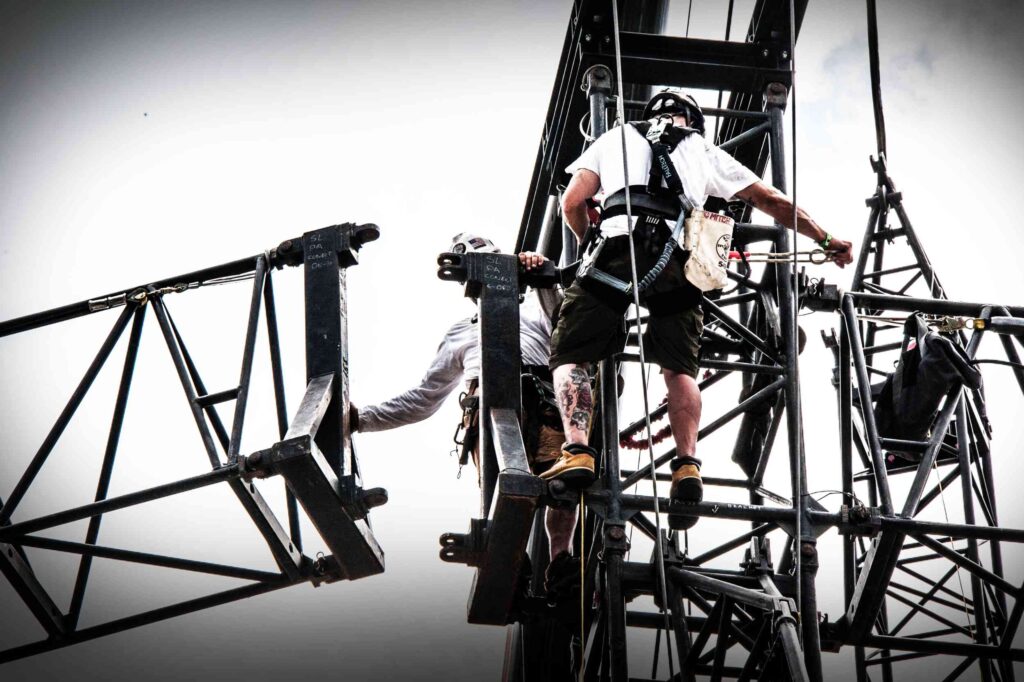
Future Trends in Event Rigging
The future of event rigging is shaped by emerging technologies. Automation and remote control systems are increasingly integrated into rigging setups, allowing for greater precision, efficiency, and versatility. Innovations such as smart rigging equipment and real-time monitoring systems further enhance safety and provide valuable data for analysis. As the concert industry embraces digital advancements, the role of event riggers evolves to encompass expertise in technology integration, troubleshooting, and maintaining cutting-edge equipment.
Summary
Understanding the intricacies of event rigging is vital for the success of concerts in the industry. From its historical roots to the use of advanced technology, event rigging has evolved to become an essential aspect of live performances. It demands collaboration, adherence to safety standards, comprehensive planning, and proficient execution. By comprehending the significance of event rigging, stakeholders in the concert industry can ensure immersive experiences for audiences, while prioritizing safety and efficiency.
FAQs
- What is the primary purpose of event rigging?
- The primary purpose of event rigging is to set up and position various equipment and elements required for live concerts and performances, ensuring safety, efficiency, and an enhanced audience experience.
- How long does it take to set up event rigging for a concert?
- The duration of setting up event rigging for a concert may vary depending on factors such as the complexity of the rigging design, the venue, and the size of the production. It can range from a few hours to several days for more elaborate setups.
- What are the most common challenges faced by event riggers?
- Event riggers often encounter challenges such as limited time for setup, adapting to different venue specifications, overcoming logistical constraints, and effectively coordinating with other teams involved in the concert production.
- Are there any specialized certifications for event riggers?
- Yes, there are specialized certifications available for event riggers. These certifications ensure that riggers possess the necessary knowledge and skills to execute rigging setups safely. Examples include ETCP (Entertainment Technician Certification Program) certification and IRATA (Industrial Rope Access Trade Association) certification.
Conclusion
Understanding the intricacies of event rigging is crucial for anyone involved in the concert industry. From its historical context to the evolving advancements and complexities of modern setups, event rigging plays a significant role in creating memorable live experiences. Prioritizing safety, efficiency, and sustainability in event rigging practices ensures the well-being of performers, crew members, and audiences alike. By shedding light on the often unnoticed aspects of event rigging, we can foster a deeper appreciation for the skill, precision, and dedication of the professionals behind the scenes.

